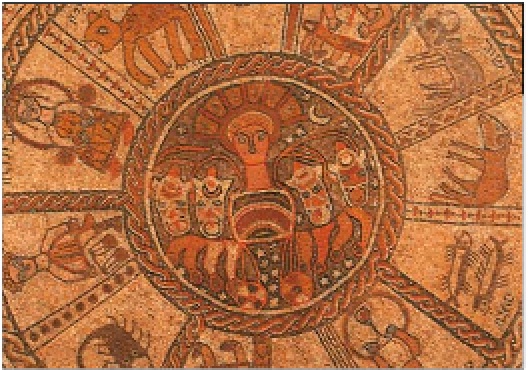Travel Reference
In-Depth Information
The archaeological sites at
Beth Shean are in two areas.
The main site comprises the
Roman-Byzantine city, and
the archaeological mound,
or 'tel'. These are both within
the Beth Shean National Park,
1 km (half a mile) north of the
town. The jewel of this site is
the Roman theatre, one of the
best preserved in Israel, and
once capable of seating 7,000.
The old Byzantine baths have
surviving mosaic and marble
decoration, and tall columns
from the ruined temples are
equally impressive. The
tel
offers a good overview of
the site, and consists of 16
or more superimposed towns.
It is difficult however to
understand the details of
its complex archaeology.
The other site focuses on
the ruined Roman amphi-
theatre, a short way to the
south. Used for gladiatorial
contests, it was connected
to the main town by a paved
street. Some of this street
survives today, paved with
huge blocks of basalt.
T
Beth Shean National Park
Tel
(04) 658 7189.
l
Detail from 6th-century mosaic at Beth Alpha, showing signs of the zodiac
Beth Alpha
r
Road map
C2. Off Route 71, 11 km
(7 miles) W of Beth Shean.
Tel
(04)
l
became part of Solomon's
kingdom. After the conquest
of Alexander the Great it was
renamed Scythopolis, and
became a flourishing
Hellenistic city. TheRoman
conquest in the 1st century BC
saw Scythopolis further prosper
as one of the ten city states of
the Decapolis. It later retained
its economic importance under
the Byzantines, also becoming
a major centre of Christianity.
An economic collapse, then
an earthquake in AD 749,
eventually left only a small
remaining Jewish community.
653 2004.
@ #
8am-4pm
(winter: 3pm) daily.
& 7
The remnants of this 6th-
century synagogue were found
by chance in 1928 by colonists
from the nearby Hefzi-Bah
kibbutz. The ruined walls give
an idea of the original basilica-
shaped building, but the main
interest is the magnificent
mosaic floor, which has
survived largely intact. The
upper part of the floor depicts
the Ark of the Covenant, with
cherubs, lions and religious
symbols. The large central
patterns represent the zodiac
and symbols of the seasons.
These show the continuing
importance of pagan beliefs
at the time, and the need for
Judaism to try to accommodate
them. The lower part relates
the story of Abraham and the
sacrifice of his sonIsaac.
#
daily.
&
Beth Shean
t
Road map
C2.
*
18,000.
@
from Tiberias.
The best-preserved Roman-
Byzantine town in Israel, Beth
Shean lay on the old trade
routes between Mesopotamia
and the Mediterranean. First
inhabited 5,000 years ago
during the Canaanite era, it
later became the main city in
the region during the period
of Egyptian occupation
(see
p41)
. Falling to the Philistines
in the 11th century BC, it then
Ruined colonnade along an old Byzantine street, Beth Shean














